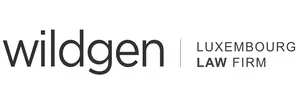Once a conflict between shareholders arises, it is of the utmost importance for each party to determine an effective strategy. Legal proceedings before a court (here: the Luxembourg courts) are only one of the options.
The following steps represent a non-exhaustive list and should only be considered for unlisted companies and is focused on Luxembourg practice:1
1. Check articles of association
The company in question and the relationship between shareholders will be governed by the articles of association of the company (hereinafter AoAs), which regulate, amongst others, the rights and obligations of shareholders. It is thus crucial that shareholders consult such documents and determine which rights and obligations they have, including information, governance, and (forced) share transfer.
2. Check shareholder agreement
The relationship between the shareholders may likely not only be regulated by the AoAs, but also by other contractual documents, such as a shareholder agreement (hereinafter SHA). As with the AoAs, it is therefore paramount that the party determines the rights and obligations provided in such an SHA and the impact on the shareholders' conflict. SHAs can contain additional information, governance, and transfer rights.
3. Check for further contractual documents
It may be the case that the relationship between the shareholders is governed by further contractual documents, such as a side agreement, or it may simply be that the shareholders have an additional relationship between each other, or with the company. They may be creditors of the company at the same time. In such case, it may be important to also verify the rights and obligations stemming from such documents.
4. Check for applicable laws
It is crucial to verify which rights and obligations exist for the shareholder on the basis of domestic applicable law, in this case, Luxembourg law. It may also have to be determined whether different contractual documents governing the relationships between the shareholders (and the company), are governed by different applicable laws. For example, even though the company is governed by Luxembourg law, it can be that the SHA is governed by a foreign law.
5. Financial health of the company
As a conflict between shareholders is often intertwined with, or triggered by, the financial situation of the business, it is vital to check the financial situation of the company, such as the annual accounts. It may, furthermore, be beneficial to verify whether the AoAs or SHA provide extended information rights, such as to receive bi-annual or quarterly financial reports or the general ledger of the company. If so, it may be prudent to make use of such rights to assess the financial situation of the company as accurately as possible. Luxembourg law also provides for a procedure that can be used under certain circumstances to obtain more information about the acts of management of a company. The viability of such a procedure should be discussed with a legal advisor, also because it can involve court proceedings.
6. Position of management
Depending on the conflict, it may be imperative to check the position of the management in general, and in relation to the conflict specifically. Are they taking sides, or are they likely to take a side? Does the shareholder with whom the conflict has arisen have the right to appoint one or several managers? Does the same right apply to all shareholders? Are specific shareholders controlling the board of managers?
7. Position of shareholders
As an important starting point, it is to be determined what shareholding and voting percentages the conflicting shareholders have in the company. It makes a big difference whether parties are majority or minority shareholders. A majority shareholder may have a number of additional tools at their disposal. Such a shareholder may naturally be able to appoint managers, increase the share capital to dilute adversaries within the limits of the law, and so on. If more shareholders exist, it will also crucial to determine which shareholding percentage they have, which rights, and which position they are likely to take in the conflict.
8. Position of other parties (e.g., creditors)
It may also be useful to establish whether other parties exist that may have considerable influence on the company, and thus also on the shareholders and their conflict, and to consider what position such parties may take.
9. Likelihood of settlement
In relation to the pre-litigation strategy, it is key to consider to what extent the adversarial party may be willing to settle, and if so, on what basis. In general, it is paramount to consider which position the counterparty or counterparties will take, and which strategies they will adopt.
10. Timeline
If a specific timeline for the solution of the conflict needs to be taken into account, this should also be considered in-depth in relation to the strategy that is developed.
11. Costs
Conflicts can be costly, both in terms of time and energy. For this reason, in order to have a realistic view of the strategies that should be adopted to solve the disagreement, it would be prudent to estimate the costs and to compare this with the costs if the parties were to settle.
12. Formulate clear objectives
To determine an effective strategy; clear objectives need to be formulated. For example, alternative options could be for parties to seek compensation for specific damages, offer to be bought out, or seek to purchase the shares of the other shareholders.
13. Contact legal advisor
To obtain an effective solution, it is advisable to discuss possible strategies and the situation in general, with a legal advisor that is specialised in shareholder conflicts.
Originally published 22 June 2021
The content of this article is intended to provide a general guide to the subject matter. Specialist advice should be sought about your specific circumstances.


